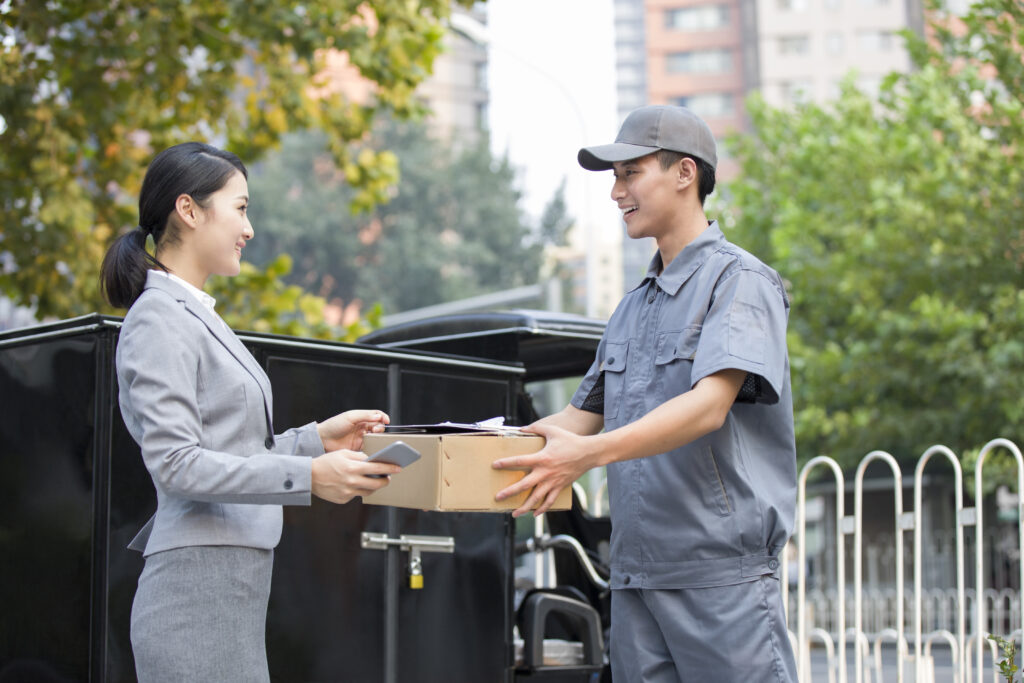Same-day delivery has transformed the way we perceive online shopping. With the change of perception has come a change in expectations, and speed that was once considered a luxury is more often than not taken as a matter of course.
While this service is great news for shoppers, is it equally positive for the other end of the chain, the businesses? The question smaller companies need to ask before diving into the trend with the retail giants is whether same-day delivery is an improvement that benefits the business as a whole or simply a waste of resources.
In an attempt to answer this question, this article will explore same-day delivery from its roots to its present form, from both the customer’s and the business’s perspective.
A trend that started with sacrifice
This story, as any other great epic, begins with a sacrifice. According to a 1992 Supreme Court ruling, only companies with a physical presence in a given state were required to tax their customers in that state. Thus, for many years Amazon enjoyed the unprecedented advantage of offering cheaper merchandise than its competitors. This did not go unnoticed, and many states and businesses continually fought to revoke the law.
In 2012, to everyone’s surprise, Amazon put a stop to the sales tax war.
Why would anybody give up such an advantage?
Paying taxes allowed Amazon to open warehouses anywhere, including the largest metropolitan areas in the US, allowing them to get much closer to their customers. Their new goal was immediate delivery. Back then, we all asked whether Amazon would be able to pull it off.

Today, thanks to the success of Amazon Prime, we know this was a risk well taken. In fact, in 2016, Amazon launched 23 new fulfillment centers. They intend to invest even more in warehouses and shipping logistics in 2017.
If Amazon was willing to sacrifice tax advantage in favor of same-day shipping, it must be worth the hassle, right? The truth is, it was worth it—for Amazon.
Small and medium businesses face an unearthly challenge when attempting to repeat the success on their own. Let’s face it, quick delivery is a huge shipping logistics pain point riddled with complexity and variables. So, can they escape it?
Raising the bar
Inadvertently, Amazon managed to raise the bar of customer expectations of online shopping. Same-day delivery not only inspired more people to shop online, it also inspired consumers to shop more often. Already in 2014, users of same-day delivery services were shopping more often (once every three months on average) than shoppers who opted for other delivery options. In fact, 11% shopped once a week and 6% more than once a week.
More recent surveys reported that 49% of surveyed shoppers are more likely to shop online if same-day delivery is available and 61% of consumers are willing to pay extra for it. There is no question that the perception of what qualifies as fast shipping logistics is changing.

However, its popularity is not just visible in the statistics. As the confession of HuffPost contributor Anjali Joshi implies, same-day delivery is not just a perk. It is beginning to transform the quality of life on a much deeper level. Quick shipping saves immense amounts of time for people in overly populated areas, where shopping in brick-and-mortar stores is not as instant an experience as one would think. It turns out people are willing to pay to avoid the crowds and save time.
Once a trend soaks deep into the fiber of everyday life, there is no turning back. Yes, same-day delivery is still in its diapers, but it is becoming quite clear it will not disappear from the scene anytime soon. The bar that was raised by Amazon needs to be reached by the rest of the retail world.
Still, Is it a waste of resources?
Retailers have been struggling to provide smooth and hassle-free same-day delivery for over a decade. Of course, Amazon and other online giants do not have to deal with costs related to store upkeep and often make money from other non-retail areas, too, which allows them to offer services smaller retailers simply cannot afford.
One of the main drawbacks of same-day shipping logistics for smaller businesses is the vast difference in workload from one day to the next, or even within a day. In some niches, this variability can be so overwhelming it can make this type of delivery virtually impossible. It requires people, efficient and flexible order fulfillment processes, well-established systems, equipment and storage space, all of which cost money.
The other major challenge is that efficiency can be crushed by the same unpredictability that makes it essential. Inefficiency goes hand in hand with higher costs and, quite often, customer dissatisfaction.
It is evident same-day delivery has genuine appeal and can help businesses get to the next level. Nonetheless, failing to evaluate the situation thoroughly means running a risk of wasting an enormous amount of resources. Moreover, failing to deliver what was promised can also damage a business’s reputation and perhaps even drive it into the ground rather than lifting it up.
A Crash Course in Modern Sales Prospecting

The good thing? You are not alone
Luckily, modern technology is known for enabling connections and collaboration. Small retailers are unlikely to match the services of the likes of Amazon on their own. However, technological advances allow them to fight back, together.
Third-party delivery services are enabling small businesses to get a piece of the action. While same-day delivery remains quite a challenge, specialized startups take the issues of capacity, efficiency and excessive costs out of the equation.
One of the entrepreneurs stepping on Amazon’s toes is Daphne Carmeli, CEO of the successful delivery startup Deliv. She argues that retailers’ constant distress and alarm over Amazon destroying their businesses is causing them to lose the chance to win over a share of the market. According to Carmeli, small retailers have an indisputable advantage with their inventory being within five miles of 90% of the population. So, while Amazon is busy building new distribution centers and figuring out the ins and outs of drone delivery, retailers can enable this service at the local level immediately.

Currently, Deliv is collaborating with larger enterprises such as Macy’s, Best Buy, PetSmart, Banana Republic, and Bloomingdale’s, as well as smaller businesses such as Susie’s Cakes, Petfood Express and Stan’s Donuts. These being just a few examples, Deliv allows retailers of all shapes and sizes to expand their same-day delivery options without much hassle.
Uber has joined the same-day delivery race as well. In October 2015, the company launched UberRush in San Francisco, Chicago, and New York, enabling any small business from the area to offer a same-day shipping service within a set geographic range. Businesses can sign up for free and provide the service for a fee.
Bottom Line
Same-day delivery might have started as a differentiation perk for large online businesses. However, its integration into the fiber of our day-to-day lives, especially for those living in crowded metropolitan areas, has transformed online shopping and customer expectations. The bar has never been set higher.
While small businesses risk wasting their resources attempting to match Amazon delivery services on their own, not all is lost. Third-party delivery services seem to be the cure to online giants taking over the market and stealing business from smaller retailers, giving them a fighting chance and a possibility to improve.
I’m telling you about this, because I believe in giving information regarding PPC advertising
forward,
I don’t know how much longer people accepting new technology , so you had better check it out now if you can.
Just click the link below to get started:
P.S.
FREE Resell License allows you to sell our eBooks to as many other people as possible, but also you can set your own price of our eBook and keep all the money.
Discover more from Personal Blog of Richard Tong
Subscribe to get the latest posts sent to your email.




